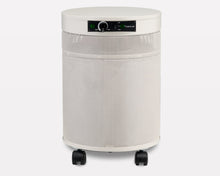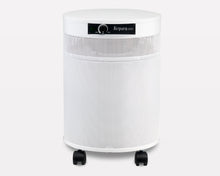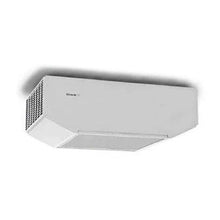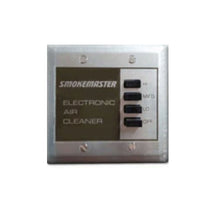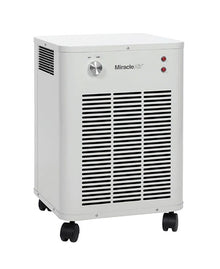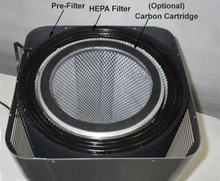Beyond the Big Screen: Finding the Best Air Purifier for Your Man Cave
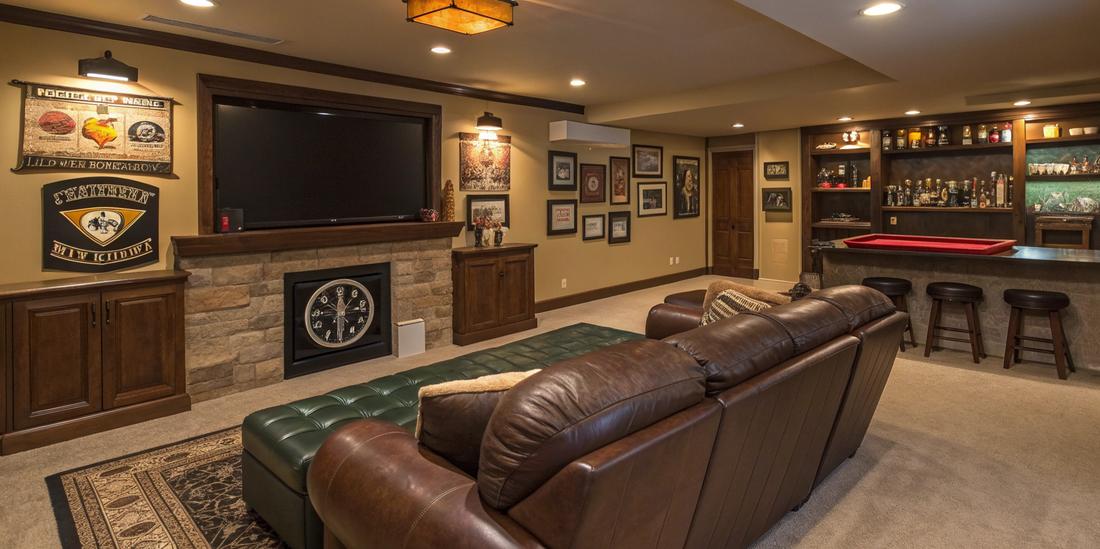
By the Team at Commercial Air Purifiers Published: October 8th, 2025
Your man cave is your sanctuary. It's the dedicated space for watching the big game, diving into a new video game, enjoying a fine cigar, or just unwinding away from the demands of the day. You’ve invested in the comfortable seating, the perfect screen, and the killer sound system. But what about the air you're breathing? Too often, these personal retreats—frequently located in basements, spare rooms, or garages—become hotspots for stale air, persistent odors, dust, and other airborne irritants that can ruin the experience and even impact your health.
An open window or a scented candle can only do so much. To truly transform your space into a clean-air haven, you need a targeted solution. This comprehensive guide will break down the science of air quality in a typical man cave, explain the technology you need to look for in an air purifier, and empower you to choose the best possible unit for your specific needs, ensuring your personal escape is as healthy as it is relaxing.
The Invisible Opponent: What's Really in Your Man Cave's Air?
Before you can solve the problem, you have to understand it. The air in an enclosed space, especially one designed for recreation, is a complex mixture of particles and gases from numerous sources. According to the U.S. Environmental Protection Agency (EPA), indoor air can often be two to five times more polluted than outdoor air. In a man cave, this issue can be amplified due to specific activities and locations.
The primary culprits fall into three categories:
-
Particulate Matter: This includes all the tiny solid and liquid particles suspended in the air. In your sanctuary, this means dust mites, pet dander carried in on clothing, pollen from outside, and—especially in basements—mold and mildew spores. These particles are major triggers for allergies and asthma, causing symptoms like sneezing, coughing, and irritated eyes that can quickly spoil your relaxation time.
-
Odors and Gaseous Pollutants: This is where most man caves face their biggest challenge. That lingering smell from last night's pizza, the distinct aroma of a celebratory cigar, or just a general "stale" or "musty" odor are all caused by gaseous pollutants. This category includes Volatile Organic Compounds (VOCs), which are gases emitted from a wide array of sources. New electronics, vinyl seating, fresh paint, carpeting, and even cleaning products can off-gas chemicals like formaldehyde. A 2022 study in the journal Building and Environment found a strong correlation between building materials and the concentration of indoor VOCs, confirming that our indoor environments are significant sources of chemical exposure.
-
The Basement Factor: Many of the best man caves are situated in basements, which presents a unique trifecta of air quality issues: higher humidity, reduced ventilation, and an increased likelihood of mold and mildew growth. That classic "basement smell" is often caused by Microbial Volatile Organic Compounds (MVOCs), which are gases produced by mold.
Simply circulating this air with a fan doesn't remove any of these contaminants. To truly clean the air, you need a system designed to capture both the particles and the gases.
The Technology That Matters: A Buyer's Guide to Man Cave Air Purification
The air purifier market is flooded with options, all making bold claims. To cut through the noise, you need to focus on the core technologies that are proven to work. For a space like a man cave, a two-stage filtration system is not just recommended; it's essential.
Stage 1: Capturing the Particles with True HEPA Filtration
The foundation of any serious air purifier is its particle filter. The gold standard here is the True HEPA (High-Efficiency Particulate Air) filter. This is a mechanical filter—a physical barrier of dense fibers—that traps airborne particles as air is forced through it.
To be classified as "True HEPA," a filter must be certified to capture at least 99.97% of airborne particles down to 0.3 microns in size.
How small is 0.3 microns? The average human hair is about 70 microns in diameter. A HEPA filter captures particles more than 200 times smaller. This includes:
-
All common dust and dust mite allergens
-
Pet dander
-
Mold and mildew spores
-
Pollen
-
The solid particulate from tobacco or cannabis smoke
Be wary of misleading marketing terms like "HEPA-type" or "HEPA-like." These filters do not meet the strict certification standard and may capture significantly fewer particles, especially the microscopic ones that can penetrate deepest into your lungs. For allergies, dust, or smoke, insisting on a True HEPA filter is non-negotiable.
Stage 2: Eliminating Odors and Gases with Activated Carbon
A HEPA filter is a powerhouse for particles, but it is completely ineffective against gases, chemicals, and VOCs—the source of virtually all odors. To tackle these, you need a second type of filtration: an adsorbent media.
The most effective and widely used material for this is activated carbon. Activated carbon is treated to be incredibly porous, creating a massive internal surface area. A single gram of activated carbon can have a surface area equivalent to a football field. When odor molecules, VOCs, and chemical fumes pass through the carbon filter, they get trapped in these tiny pores through a process called adsorption.
Crucially, the amount and quality of the carbon matter immensely. Many consumer-grade air purifiers include a flimsy pre-filter lightly sprayed with carbon dust. This will become saturated with odors very quickly and do little to combat a strong source like cigar smoke or persistent food smells. For a man cave, you need a system with a substantial carbon filter, often measured in pounds. A deep-bed carbon filter with several pounds of high-grade activated carbon is designed to effectively adsorb heavy chemical and odor loads and will last much longer before needing replacement.
A Quick Word on Sizing: CADR and ACH
You can have the best filter technology in the world, but if the unit is too small for your room, it won't be effective. Two key metrics help you size an air purifier correctly:
-
CADR (Clean Air Delivery Rate): This number, typically measured in Cubic Feet per Minute (CFM), tells you how much clean air the purifier delivers. It has separate ratings for dust, pollen, and smoke. A higher CADR means the unit can clean the air in a larger room more quickly.
-
ACH (Air Changes per Hour): This is perhaps the most practical metric. It tells you how many times the air purifier can clean the entire volume of air in your room in a single hour. For general air quality improvement, 2-4 ACH is a good target. For a man cave with specific challenges like smoke, allergens, or strong odors, you should aim for 4-5 ACH or even higher.
To calculate the ACH a unit will provide in your room, you can use this simple formula:
Properly sizing your unit ensures it can keep up with the contaminants being generated, providing a constant supply of fresh, clean air. To better understand these performance metrics, our detailed article, What is CADR and Why Does It Matter?, can help.
Putting It All Together: Choosing Your Ideal System
The "best" air purifier for your man cave depends entirely on your primary challenges. Let’s create a simple checklist based on the most common scenarios.
Look for a system with:
-
For the Dusty, Allergy-Prone Basement: Your priority is particle removal.
-
Must-Have: A large, certified True HEPA filter.
-
Must-Have: A high CADR rating appropriate for your room size to achieve at least 4 ACH.
-
Good to Have: A decent amount of activated carbon to handle general mustiness.
-
-
For the Cigar Lounge or Entertainment Hub: Your priority is smoke, odor, and VOC removal.
-
Must-Have: A substantial, deep-bed activated carbon filter (measured in pounds, not ounces). This is your most important feature.
-
Must-Have: A certified True HEPA filter to capture the fine particulate matter from smoke.
-
Must-Have: A powerful motor to drive air through these dense filters and achieve a high ACH (aim for 5+ for active smoking).
-
-
For the All-Around Gaming Den and Theater: You face a mix of dust, electronic off-gassing, and food odors.
-
Must-Have: A balanced system with both a True HEPA filter and a quality carbon filter.
-
Must-Have: A CADR rating properly sized for your room for at least 3-4 ACH.
-
Good to Have: Features like quiet operation on lower settings so it doesn't interfere with your movie or gaming experience.
-
By focusing on these core technologies and performance metrics, you can confidently select a machine that delivers real results. Exploring a well-curated range of Home & Residential Air Purifiers can help you compare models that feature this essential technology and match them to your specific needs.
The Final Verdict: Upgrade Your Air, Upgrade Your Sanctuary
Your man cave should be a place where you can truly breathe easy. Investing in a high-quality air purifier isn't a luxury; it's a fundamental upgrade to the health and comfort of your personal space. It eliminates the distractions of odors and allergens and addresses the unseen threat of airborne pollutants. By choosing a system with the right combination of True HEPA filtration for particles, substantial activated carbon for odors and gases, and the power to clean your room's air multiple times per hour, you create an environment that is truly a clean-air escape.
Ready to transform your man cave into a clean air sanctuary? Our experts are here to help you choose the perfect system. Contact us for a personalized recommendation.
Frequently Asked Questions (FAQ)
Q1: How long should I run an air purifier in my man cave? For best results, you should run your air purifier continuously, 24/7. Air pollutants are constantly being introduced into the space. Running it on a low, quiet setting when you're not there and turning it up when the room is in use (e.g., during a movie or when smoking a cigar) is an effective strategy.
Q2: Will an air purifier help with musty basement smells? Yes, very effectively, provided it has the right filter. Musty smells are caused by mold, mildew, and bacteria. A True HEPA filter will capture the airborne spores, while a substantial activated carbon filter will adsorb the smelly gases (MVOCs) they produce.
Q3: Can an air purifier completely get rid of cigar smoke? An air purifier is the most effective tool for removing airborne smoke particles and odor-causing gases. However, it cannot remove the "thirdhand smoke"—the sticky, toxic residue that settles on walls, furniture, and carpets. A high-performance air purifier combined with regular surface cleaning is the best approach for managing a smoking environment.
Q4: How often will I need to change the filters? Filter life depends entirely on the purifier model, the amount of pollution in your air, and how often you run it. In a challenging environment like a man cave with smoke or high dust levels, expect to change filters more frequently than in a clean bedroom. Typically, HEPA filters last 1-3 years, while carbon filters can last anywhere from 6 months to 2 years, depending on their size and the gas load.
Q5: Do air purifiers use a lot of electricity? Modern air purifiers with energy-efficient DC motors are designed to be run continuously without a major impact on your electricity bill. On a low setting, most consume less power than a standard light bulb. The cost of running one is minimal compared to the benefit of breathing clean, healthy air.

